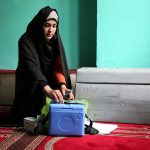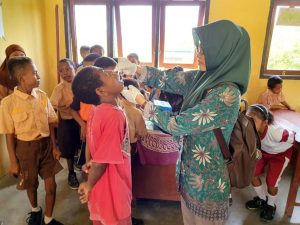
© GPEI
Fast Facts
Population: 268.1M (2020)
Polio Status:
- VDPV Outbreak (January 2019) has been contained (April 2020)
- Polio added to the vaccine schedule: 1981 (OPV), 2016 (IPV)
- OPV4 Coverage: 81.4% (2019)
- IPV Coverage: 68.4% (2019)
Timeline
1980
Indonesia implements an intensive polio eradication program through the Expanded Program on Immunization (EPI), including administration of Oral Polio Vaccine (OPV).
1988
The World Health Assembly passes a resolution to eradicate polio by the year 2000, launching the Global Polio Eradication Initiative.
A series of implementation strategies are rolled out to support polio eradication, including Local Area Monitoring (LAM), use of supervision checklists, and Area Specific Plans (ASP) for immunization.
1991
Polio case reporting transitions from clinically-based to laboratory-based reporting.
1995
Indonesia begins conducting National Immunization Days. By 1995, the last isolate of indigenous wild poliovirus type 3 is reported in Medan.
2014
The Southeast Asian Region officially received polio-free accrediation after 3 years from the last case in India. In the preceding decade, Indonesia continues to implement National and Sub-national Immunizaiton Days and conduct Acute Flaccid Paralysis (AFP) surveillance.
2017
The polio sustainability plan is developed.
2019
In February 2019 a circualting vaccine-derived poliovirus type 1 (cVDPV1) was confiremd in Papua Province. By June 2020, the GPEI declared Indonesia no longer infected but vulnerable to re-infection.
Country Data
Indonesia together with countries in World Health Organization Southeast Asian Region (WHO-SEAR) were certified as polio-free by the Global Polio Eradication Initiative (GPEI) in 2014. However, Indonesia still poses high risk of outbreak. Circulating vaccine-derived poliovirus type 1 (cVDPV1) was detected in Papua province in November 2018 and thus Indonesia was subsequently re-classified as an outbreak country. In April 2020 the outbreak has been successfully contained after several rounds of Outbreak Response Immunization (ORI).
Indonesia introduced polio immunization into the routine immunization program in 1981. Following the World Health Assembly (WHA) policy on GPEI in 1988, Indonesia initiated a polio eradication initiative in 1991 and fully implemented with AFP surveillance in 1995. The last indigenous case of WPV detected in 1995. An outbreak of 305 cases of imported WPV from Africa via the Middle East occurred in 2005 and was controlled by February 2006. Apart of WPV outbreak, cVDPV outbreak also occurred in 2006. Last WPV was reported in 2006 in Aceh Tenggara.
Polio eradication program is under the responsibility of the Directorate General of Disease Control and Prevention (DGDC) and implemented by the Directorate of Surveillance and Health Quarantine (DSHQ). Within DSHQ, polio immunization implementation sits within the Sub-directorate of Immunization while Acute Flaccid Paralysis (AFP) surveillance is under the Sub-directorate of Surveillance. The responsibility for vaccine procurement is held by the Directorate of Pharmacy and Health Equipment (DPHE); responsibility for the health laboratories falls under the Directorate General of Medical Services; and the responsibility for developing information, education and communication (IEC) material is under Directorate of Health Promotion. Provincial and district governments are responsible for delivery of immunization programs, while the national government remains responsible for providing materials, guidelines, monitoring and evaluation, and maintaining quality.
There are three national polio laboratories for diagnostic testing which are National Institute of Health Research and Development Lab, Biofarma Lab and East Java Provincial Lab. Several independent bodies were established to support the initiative such as, National Certification Committee on Polio Eradication (NCCPE), Expert Review Committee (ERC), and National Authority for Containment (NAC).
Indonesia received external funding aid from GAVI. Since 2019, Indonesia has been transitioned and has developed sustainability planning since external funding gradually are withdrawn.
Organization Description
The Faculty of Medicine, Public Health, and Nursing, Universitas Gadjah Mada (FK-KMK UGM) was established in March 1946, and is the oldest medical faculty in Indonesia. The mission of FK-KMK UGM is to improve community health status through excellent education, research, community development and health service, based on local wisdom, ethics, professionalism and evidence-based science integrated in an Academic Health System.
FK-KMK UGM offers academic programs, conducts medical and public health research to support national and international needs, offers community service opportunities, and advocates for good governance in the health sector.
The research roadmap of FK-KMK UGM for 2015-2025 focuses on:
- Wellness, ageing and healthy life style (including genetic and diseases, wellness, life style affecting health, environment, nutrition and health, cancer and non-communicable diseases and ageing)
- Prevention, diagnostic, medical and public health for improving care delivery (including organ transplantation, stem cell, biomedical engineering, technomed, herbal medicine and communicable diseases)
The STRIPE project is managed by the Center for Tropical Medicine, Faculty of Medicine, Public Health and Nursing, Universitas Gadjah Mada (CTM UGM). Since 1996, CTM UGM has been determined to improve the quality of Indonesian people’s health through research, training, and knowledge dissemination on tropical diseases control. CTM UGM focuses on tuberculosis, arbovirus, malaria, neglected tropical diseases/zoonoses, and HIV/STI as well as cross-cutting issues. Many strategic projects and collaborations have been established with national and international partners. Further information can be accessed on CTM UGM website on https://tropmed.fk.ugm.ac.id/
Page updated on: 31/08/2020
Key Documents
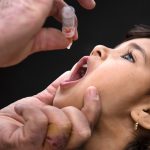
What can over 30 years of efforts to eradicate polio teach us about global health?
View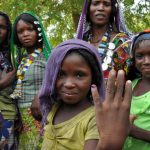
Evaluating the process of partnership and research in global health: reflections from the STRIPE project
View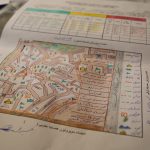
Sampling method for surveying complex and multi-institutional partnerships: lessons from the Global Polio Eradication Initiative
View